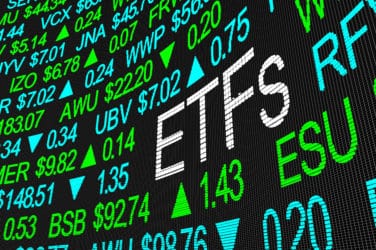
Nasdaq has rebuilt the way it stores data currently used for trade surveillance so that clients can easily access the information for a number of different uses.
The exchange announced the launch of its data discovery capability within Nasdaq Trade Surveillance.
Today we launched data discovery capability for Nasdaq Trade Surveillance, the world’s most widely used surveillance solution for the sell-side industry, giving compliance and data teams deeper insight to detect and prevent market abuse.https://t.co/gsMNVk6QHx pic.twitter.com/bD0kTcvDcS
— Nasdaq (@Nasdaq) January 7, 2020
Valerie Bannert-Thurner, senior vice president and head of buy-side and sell-side solutions, market technology at Nasdaq, told Markets Media: “We have more than 160 customers who use our trade surveillance globally across asset classes. We have unlocked the value in this data so customers can now easily access the information for a number of different use cases.”
In order to achieve this flexibility, the exchange has completely changed the way it stores data so it uses a next-generation platform with open cloud-based infrastructure.
Examples of uses for the data discovery capability include helping firms respond to regulatory inquiries more quickly and allowing access to normalized trading data across multiple asset classes and venues for use in data audits and reconciliation for regulatory compliance including MiFID II, the European Union regulation. The offering also helps data scientists extract targeted data sets, aggregations and behavioral indicators for use in internal data analysis projects or to develop new services and products.
“There is a very flexible API which is a stepping stone to enabling customers to use the data for market intelligence, and not just surveillance and compliance,” added Bannert-Thurner.
She continued that the offering was co-developed over the past year with Nasdaq’s broker partners who have signed up for the production model. The development was also a global team effort for Nasdaq which uses the firm’s investment experience in the cloud and platform.
“This is Nasdaq’s first surveillance use case of our cloud-based Nasdaq Financial Framework (NFF) architecture and framework,” she added. “It is a big stepping stone to giving clients flexibility to unlock value in their data.”
Data scientists become quants
The early part of the ‘20’s will see data scientists take over quants on the trading desk according to the Top 10 Market Structure Trends for 2020 from Greenwich Associates.
*New* Top 10 Market Structure Trends for 2020 https://t.co/B43OSax5FK via @GreenwichAssoc pic.twitter.com/45K1Rki1JX
— Greenwich Associates (@GreenwichAssoc) January 6, 2020
The consultancy said in the report: “One could argue that most if not all of the market’s evolution over the past decade has come because of access to data and the ability to put it to work. So it should come as no surprise that those expert in doing just that are taking over.”
Matthew Hodgson, chief executive and founder of analytics provider Mosaic Smart Data, said in an email that the demand for data scientists across the market is the highest it has ever been.
“Currently, ~80% of a data scientist’s time is spent identifying, remediating, aggregating, cleansing and normalising data to transform it into a suitable format for analysis,” he added. “The biggest and most forward-looking firms across the market have understood this and are utilising platforms that automate these low-level tasks.”
Hodgson continued that the institutions who are able to extract the most value from data will have a significant and compounding competitive advantage over their peers.
Michael Boguslavsky, head of artificial intelligence at Tradeteq, said in an email that the electronic trading platform for institutional trade finance is seeing a trend towards greater openness of data sets and more effective ways for this data to be accessed in order to make effective, real-time decisions.
“Many banking and finance institutions have decades of data which haven’t historically been utilized effectively,” Boguslavsky added. “If data scientists are brought into business processes from the outset, they will be able to transform the way the entire business is run from a data science perspective.”








